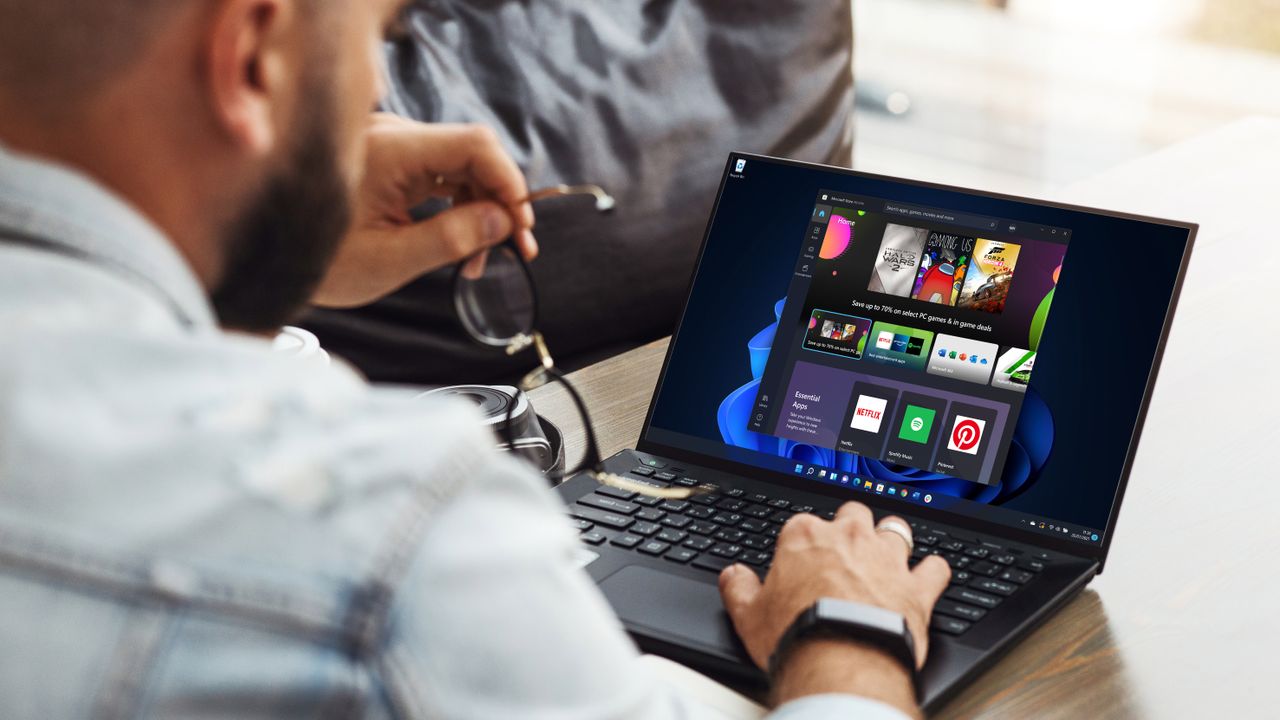- Microsoft has given us more details on how PC-to-PC migration works
- It’ll offer a useful alternative to those who don’t want to restore a backup via OneDrive
- The feature does still have caveats, though, including needing a Microsoft account – and it won’t support Arm-based PCs initially, either
Microsoft has provided more details on how its PC-to-PC migration feature will actually work when it comes to switching over to a new Windows 11 PC.
The feature is designed to smooth over the upgrade to a new PC, and make it as easy as possible – albeit with some caveats – and clearly the focus is on helping Windows 10 users switch to Windows 11 (assuming their hardware supports the latter OS).
Previously, PC-to-PC migration has been seen in testing, and Microsoft has put the shell of the experience in the release version of Windows 11 (with the latest update) – however, it isn’t yet functional.
At least we now know exactly how the ability will work thanks to a support post Microsoft has uploaded (as Thurrott.com spotted). So, let’s dive into all the key details you need to know.
The old PC and new PC you’re transferring over to will need to be on the same network, either connected via Ethernet (wired, to your router) or wireless (on the same Wi-Fi network).
Both machines will also need to be signed into a Microsoft account – so with the new PC, you’ll have to sign in to an account during setup. Once that initial setup is run, you can kick off the PC-to-PC migration, which will pair the PCs using a one-time-code.
You’ll then have to select what you want to transfer across in the way of files or settings. You can transfer almost everything in terms of files and the options you’ve chosen in Windows, including personalized elements of the desktop (wallpapers or themes), but there are a few exceptions.
What won’t be ported across includes temporary and system files (which you wouldn’t want anyway), as well as the apps installed on the old PC, and saved passwords (though you may have them stored in your browser, anyway).
Once you’ve chosen the data and settings to be ported across, the process will begin, providing you with a timer as an indication of how long you’ll be waiting (hopefully an accurate one – these countdowns aren’t always that reliable).
If the network connection should drop somehow, Microsoft says that Windows will automatically try to resume the data transfer when it’s back up again – though you can manually restart the process if all else fails.
Analysis: backup or migration

The PC-to-PC migration feature is essentially an alternative for those who haven’t configured a backup (saved to OneDrive) via the Windows Backup app. If you have one of those, you can simply deploy that backup on the new PC – if not, you can use PC-to-PC migration instead (as a local data transfer method, but you must still be signed into a Microsoft account as noted). Or at least you’ll be able to when it’s fully released to Windows 11 (and 10) PCs, which should happen soon enough – I’m betting Microsoft will want this up and running before Windows 10 reaches End of Life (for obvious reasons).
It’s worth noting that if you do configure a backup on the Windows Backup app – just to sync your device settings, in fact – you get an additional year of support for Windows 10 for free (dodging the $30 fee Microsoft had previously slapped on this option).
So, Backup is clearly an app Microsoft wants people to use – and I can see that choice being a popular stopgap measure to put off any decision on upgrading to Windows 11 until next year – but it’s good to see that PC-to-PC migration is being offered up as another way forward, with fewer strings attached (OneDrive-wise, though you still have to use a Microsoft account).
With PC-to-PC migration, the main thing you don’t get ported over to the new PC is your apps, but that isn’t surprising. Indeed, the Backup app won’t provide your apps when it restores a backup – although it can restore apps from the Microsoft Store, and with third-party apps, provide a link to download them for convenience (you don’t get that ability with the new migration feature).
The main difference with the new feature, then, is that migration does not require or use OneDrive (albeit it does need a Microsoft account), and there are no options pertaining to keeping your apps (even if using Windows Backup is limited in that respect, too).
Some other notable caveats with PC-to-PC migration are that it doesn’t work with drives that are encrypted with BitLocker (they must be decrypted first), and that devices with Arm CPUs aren’t supported either (yet). Given that Microsoft says Arm PCs aren’t “currently” catered for, I expect that to change soon enough – especially as these represent a fair chunk of Copilot+ PCs, which are the machines Microsoft is busy trying to get everyone to buy into.
As noted, we’re still waiting for the full PC-to-PC migration experience to be enabled in Windows 11 (and Windows 10), but it shouldn’t be too long before this happens.
You might also like…
- Microsoft promises to crack one of the biggest problems with Windows 11: slow performance
- Windows 11’s handheld mode spotted in testing, and I’m seriously excited for Microsoft’s big bet on small-screen gaming
- No, Windows 11 PCs aren’t ‘up to 2.3x faster’ than Windows 10 devices, as Microsoft suggests – here’s why that’s an outlandish claim
